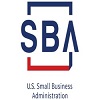Design Control Process for Medical Devices
07/19/2019
Category: Medical device consulting
The FDA requires registered establishments to comply with Current Good Manufacturing Practices (CGMP), and there are specific regulations for each industry, such as medical devices, drugs and biologics. Medical device CGMP is comprised of the Quality System Regulation (QSR), which is FDA’s way of communicating regulatory expectations to the medical device manufacturers. FDA compliance consultants will stress the importance of the FDA philosophical principle “Quality by Design.” The FDA requires this principle to be implemented and maintained throughout the life cycle of each medical device product. In addition, manufacturing activities must adhere to CGMP. The Quality System Regulation encompasses many important components, one of which is design control. Design control aspects include the design and development plan, design inputs and outputs, verification and validation, design transfer and changes, and design review.
Design and Development Plan
The design and development plan must outline who is responsible for each activity and must affirm compliance with design control. An effective interaction method between development groups and the review/ approval schedule should be included in the plan. The plan should be continuously updated as needed. FDA compliance consultants can help with every aspect of creating a thorough plan for the medical device’s design and development. Common items to be included in the plan are:
- Objectives
- Quality & Compliance Assurance Statements
- Major tasks, responsible individuals, deliverables
- Scheduling of all major tasks
- Identification of major reviews and decision points
- Procedures
- Identify reviewers
- Controls for documentation
- Notification activities
Also Read: Avoiding an FDA 483 at a Pre-Approval Inspection for NDA & ANDA
Design Inputs and Outputs
Design inputs are defined by their characteristics and physical performances, which should have the end-user’s needs met. Design outputs are design inputs displayed in descriptive materials such as drawings, code, documents, material/ product specifications and other items. A good foundation to any product is to properly identify the design inputs. It may be beneficial to obtain a third-party review from FDA compliance consultants with the experience in the design control process.
Verification and Validation
Verification and validation are terms that should never be used interchangeably, but they do go hand in hand. Verification ensures the medical device was manufactured correctly and the specified requirements have been achieved by confirming that the design outputs match the design inputs. Validation is the process of determining if the intended use and function of the medical device meets the end-user’s specified needs. If either design control activity fails, then the medical device must go back to the start of the product cycle where the necessary changes can be made. FDA compliance consultants can help medical device manufacturers overcome repeated failed verification and validation results.
Design Transfer and Changes
The activity of transferring final device specifications to manufacturing is called design transfer. The transfer must be recorded in the Device Master Record (DMR). This design control activity should have detailed procedures to ensure the transfer is done accurately and that information is not missed when transitioned from development to manufacturing.
Design Review
Design reviews are scheduled meetings as written on the design and development plan and allow the manufacturer to examine thoroughly the design process up to the review meeting. They afford the opportunity to make changes if necessary, by cycling back to the product cycle where the changes can take place. The individuals specified in the design and development plan are responsible for the design reviews.
The design control process is a required FDA systematic approach to manufacturing devices. It is important that each design control activity has well written standard operating procedures for carrying out the necessary actions. The time for the design control process can be reduced if the appropriate personnel are assigned to the team and a thorough plan is implemented. FDA compliance consultants can help medical device manufacturers create an effective strategy and implement detailed standard operating procedures.
Author Information
Christina Sanchez Miller, MPH has over 20 years of management, biologics, quality assurance and research experience in the medical field. She is a published author in scientific books, papers and has presented at several international conferences. Christina has developed medical applications in the biologics field. Her experience includes operations and consulting in FDA Adverse Event Reporting, FDA Product Deviation Reporting, FDA 483s, cGTPs, infection control, certified ISO Class 5, 7, 8 development and maintenance, QIC and auditing.
BRG is a global scientific & regulatory consulting firm with extensive experience in the strategic development of drug products, biologics, medical devices, combination products and in FDA regulatory affairs. BRG is comprised of FDA compliance consultants focusing on 510k, INDs, and NDAs. The opinions and statements in this blog are those of the authors and do not necessarily reflect those of BRG. This blog is based on personal experience and reviews of information publicly available or identified in other database searches.
tagging: Design Control Process > medical device > Medical Device Consulting


